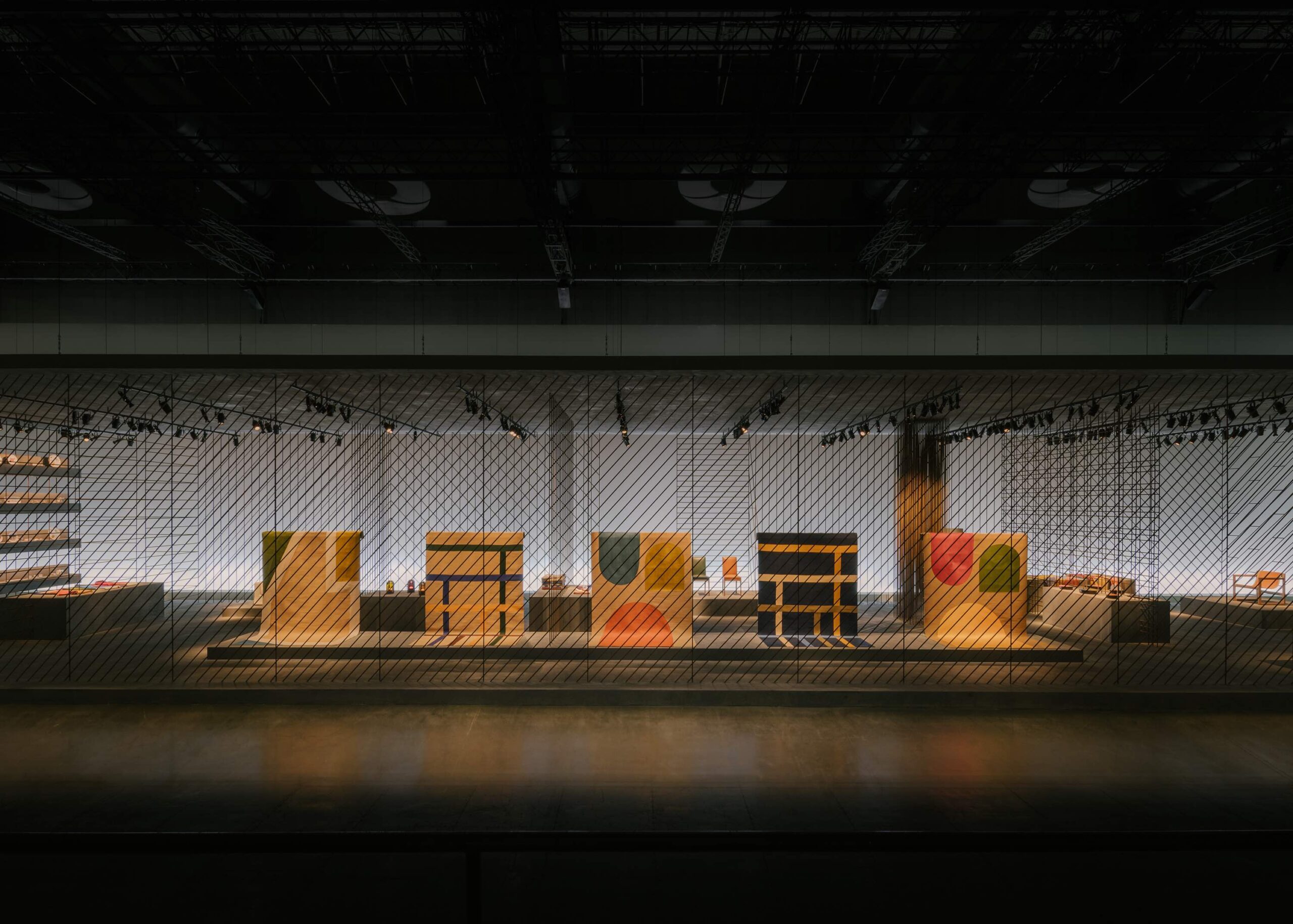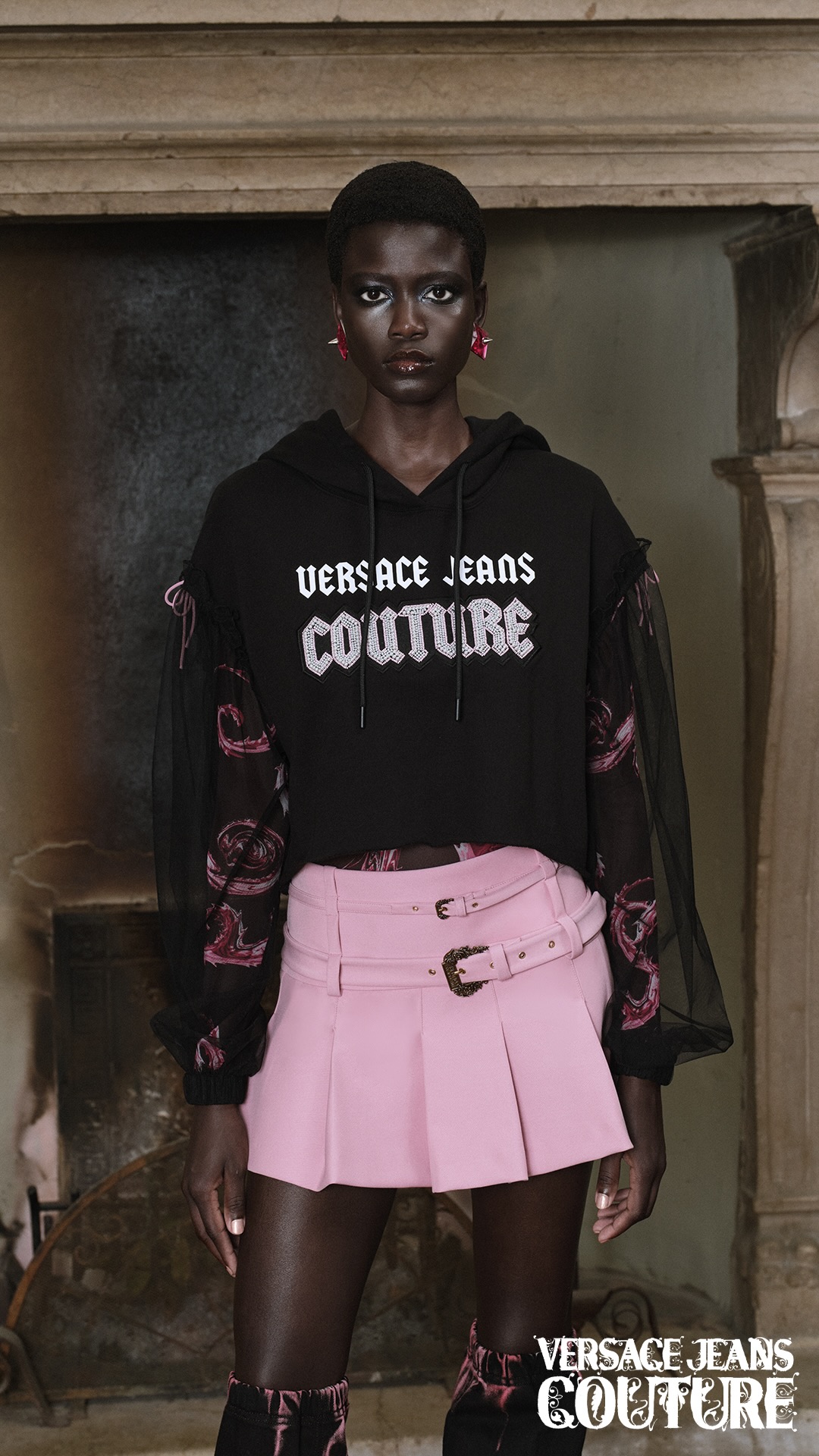The Hermès interior project returns to the stage to narrate the concept of beauty, as a multifaceted and multifaceted idea, as the pivot point around which the simple and sophisticated forms of each creation presented revolve. Each element draws its aesthetic from a form of archaism, natural vigour and purity. The power of the essential is conveyed first and foremost by the set design, which is reduced to a minimum and loses all excess, to show itself as real and authentic: a graphic framework of iron rods and cement. Thanks to the play of textures and lines, light and shadow, architecture and design, the structure appears radical, extreme and powerful.
In the proposals of the new collection, evidence and tangibility are produced through subtraction. It is by subtracting the classic elements of the Maison that each piece of furniture is revisited by great names in design. The skillful savoir-faire takes shape around exceptional elements: examples of this are the glass-blowing, the weaving technique in upholstery or the virtuoso embroideries on carpets and throws. Organic matter is emphasized in all its forms, contrasted and at the same time in dialogue with colors and geometries. Bronze, glass, wood and leather are juxtaposed with muted tones to create a perfect combination that is an expression of motifs that pay homage to the Maison’s artistic and creative heritage.

The Ancelle d’Hermès armchair is created by Danish designer Cecilie Manz and is characterised by a solid wooden frame combined with a sheet of leather that creates a light and elegant seat in contrast. The inspiration comes from the Scandinavian tradition that blends robustness and minimalism, giving the object a sophisticated and structured look. There are new Arçon and Oxer rugs designed by Pierre Charpin, featuring draft horses, race tracks and intertwined horse heads, these designs are realised in an interplay of graphic lines and emblematic colors. The technique used is Cordélie roping, which creates textural effects thanks to the precise positioning of a hand-embroidered cotton cord on a linen base. This textile signature is unique to Hermès. Archetypal and timeless, the Contour d’Hermès sofa places the fabric at the centre of attention. It is upholstered in a wool and cotton canvas with buttons punctuating the padded back, and leather piping emphasizes its lines. The Souffle d’Hermès lamps by Finnish designer Harri Koskinen are objects to contemplate. They directly explore the material nature of glass, are fascinating both lit and unlit, affirm their familiarity and transparency, and embody the concepts of simplicity and strength. Presented in blackcurrant, fern or burnt orange, they express the magic of the glassblower’s craftsmanship. The Patine d’Hermès line stems from a strong desire to work leather and bronze together. Combined with simple forms, these primitive and natural materials are unmistakably graphic and radiate an innate power. The deep, shimmering patina of bronze is the result of unique Japanese know-how, while the red of nasturtium creates a vivid contrast on the two-tone leather lid of a zipped box. The Conservatoire chair dates back to the 1930s, has an angular, geometric look and is upholstered in leather, inspiring Jasper Morrison to reinterpret it with a light touch. By making its legs slimmer and revising its entire proportions, the designer has endowed it with an innate modernity. The exceptional leather upholstery of the seat and back has been faithfully replicated: the result is a fusion of history, know-how and contemporary attitude. The Saut Hermès porcelain service encapsulates the idea of a convivial and relaxed meal. Decorated with fresh, spontaneous illustrations drawn freehand with felt-tip pen by French artist Jochen Gerner. The drawings feature motifs inspired by the Saut Hermès show jumping competition. The equestrian universe is thus represented in soft tones to create a cheerful and colorful service. The Casaqu’échiquier, Crazy H and H Échelle plaids are made of cashmere and directly inspired by the maison’s archives, contrasting colored yarns intertwine to create a unique pattern. They are spun and woven entirely by hand, using multiple shuttles or the ikat technique depending on the pattern. Exceptional craftsmanship is combined with a meticulous blend of graphics, assembly and vibrant colors.
Beauty is multi-faceted. It can come in the most basic or the most sophisticated of forms.
Hermès objects are functional and unique, they generate beauty and essentiality, they are marked by graphic designs, simple and light lines, and contrasting raw materials; they give meaning to every atmosphere. The material lives in the creative process, dictating requirements and quality for the work itself. Singular aspects that determine the characteristics of each piece proposed. The Maison’s research and desire remains to create objects that stand the test of time, and that convey the innate sense of modernity of the Maison’s heritage.
The space at La Pelota, Via Palermo 10 in Milan opens to the public from Wednesday April, 19th until Sunday April, 23rd. For further information hermès.com.


















